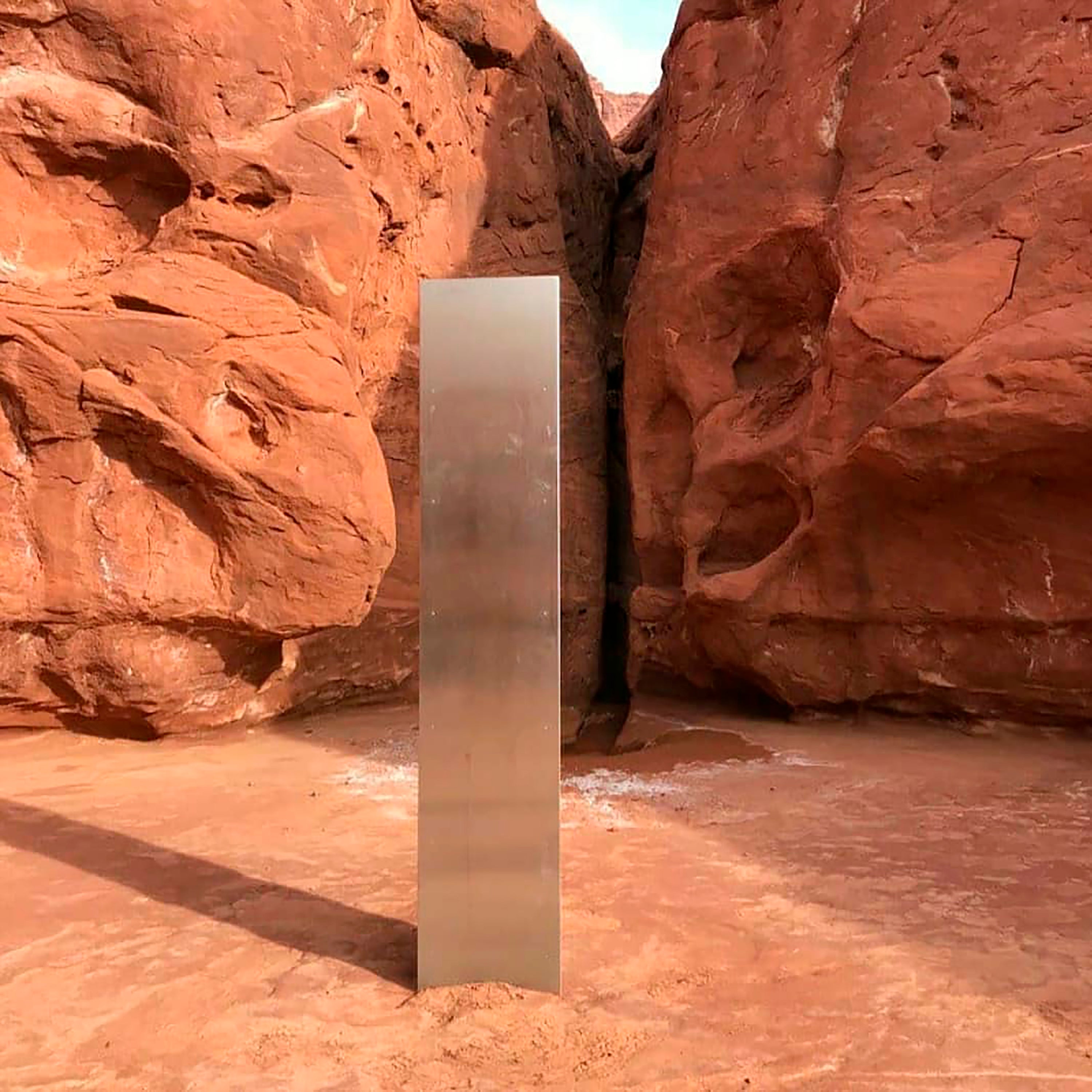California monolith emerges after Utah, Romania works exit
Days after the discover and swift disappearance of two shining metal monoliths spotted half a world away from each other, another towering structure has popped up, this time in Southern California

Your support helps us to tell the story
From reproductive rights to climate change to Big Tech, The Independent is on the ground when the story is developing. Whether it's investigating the financials of Elon Musk's pro-Trump PAC or producing our latest documentary, 'The A Word', which shines a light on the American women fighting for reproductive rights, we know how important it is to parse out the facts from the messaging.
At such a critical moment in US history, we need reporters on the ground. Your donation allows us to keep sending journalists to speak to both sides of the story.
The Independent is trusted by Americans across the entire political spectrum. And unlike many other quality news outlets, we choose not to lock Americans out of our reporting and analysis with paywalls. We believe quality journalism should be available to everyone, paid for by those who can afford it.
Your support makes all the difference.Days after the discovery and swift disappearance of two shining metal monoliths spotted half a world away from each other, another towering structure has popped up, this time at the pinnacle of a trail in Southern California
Its straight sides and height appear similar to one discovered in the Utah desert and another that was found in Romania. Like those structures, the origins of the California edifice are also mysterious.
It's at the top of a hill in Atascadero, about halfway between San Francisco and Los Angeles KEYT-TV reported Wednesday. The tall, silver structure drew hikers to the area after photos were posted on social media.
A similar one spotted about two weeks ago in Utah's otherworldly red-rock country became a beacon of fascination around the world as it evoked the movie “2001: A Space Odyssey,” and drew hundreds of people to the remote spot.
Two extreme-sports athletes said this week they were part of a group that tore down the hollow metal structure because they were worried about the damage the droves of visitors were causing to the relatively untouched spot. Officials said the visitors flattened plants with their cars and left behind human waste.
A similar structure that appeared last week in Romania has also disappeared.
The Utah creation evoked famous land-art pieces that dot the American West, including two well known works elsewhere in the state. Robert Smithson’s Spiral Jetty is an earthwork along the Great Salt Lake and Nancy Holt's Sun Tunnels are huge concrete pieces in the west desert.
Like those pieces, the monolith was fascinating in part because of its context in the landscape, said Whitney Tassie, a curator of modern and contemporary art at the Utah Museum of Fine Art.
“That’s a big, big part of land art in general is this idea of an experience, of a journey,” she said.
The intense social media reaction to the monolith against the backdrop of a punishing pandemic, along with the quick destruction of the piece, has become a part of its story, she said. Police have said the dismantling may not be illegal since no one has claimed the structure as their property.
The still-anonymous creator of the Utah monument, meanwhile, did not follow the steps taken by land artists of the 1970s to secure permission to make their works. Visitation to those remote sites is now managed and overseen to avoid too much stress on the environment. Federal and state officials in Utah had also expressed concern about the area around the monolith being overrun.
“It’s good to think about our relationship with the earth, which is ultimately what these sorts of projects do,” Tassie said. “Man's impact on the environment front and center."
___
Associated Press writer Lindsay Whitehurst in Salt Lake City contributed to this report.